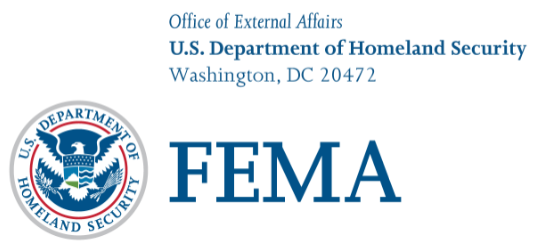
WASHINGTON — FEMA continues coordinating the federal response efforts in Hawaii, while also closely monitoring the impacts from Tropical Storm Hilary in California and other states in the southwest.
FEMA is coordinating closely with California, Arizona and Nevada in the path of the storm and stands ready to provide support as needed. FEMA pre-positioned supplies at March Air Reserve Base in Riverside, California. A FEMA Incident Management Assistance Team deployed to the California Office of Emergency Services and is prepared to assist with any requests for federal assistance. Additional teams are on standby for deployment if necessary.
Tropical storm conditions are expected to begin later today in portions of the southwestern U.S. The National Hurricane Center predicts rainfall amounts of 3 to 6 inches, with isolated amounts of 10 inches across portions of southern California and southern Nevada.
FEMA urges residents in Hilary’s path to complete preparation for flooding impacts associated with the storm. Although Hilary is expected to weaken to a tropical storm before it reaches Southern California, it is forecast to bring dangerous to catastrophic flooding across portions of southern California and southern Nevada.
Residents should not focus on the exact track of the hurricane. Hurricanes are immense systems, and their size, intensity, speed and direction can change quickly. Additionally, areas far from the storm’s center can experience effects such as flooding and heavy winds.
As the storm moves inland, visitors and residents in the storm’s forecast path should monitor their local news for updates and directions provided by their local officials and heed local evacuation orders.
FEMA encourages everyone to visit www.Ready.gov or www.Listo.gov to learn more about how to be prepared and how to protect yourself and your loved ones during emergencies.
Stay Safe During and After the Storm
Important safety reminders if you’re in an area that has been or is still being impacted by the storm:
- If local officials give the order to evacuate, do so immediately. Do not forget your pets.
- Flooding is often the greatest threat to life and property from a tropical storm. It poses a significant threat for drowning and can occur before, during or after the center of a storm passes through an area. Be aware: Flooding can sometimes cut off transportation routes with little or no warning.
- Don’t drive or walk through flood waters. It only takes a small amount of water to move people or vehicles. If you encounter a flooded roadway, don’t attempt to pass through water — turn around, don’t drown.
- Stay off the roads. Emergency workers may be assisting people in flooded areas or cleaning up debris. You can help them by staying off the roads and out of the way.
- Avoid downed power or utility lines; they may be live with deadly voltage. Report them immediately to your power or utility company.
- Your National Flood Insurance Program policy will cover and reimburse certain actions you take to minimize damage to your home and belongings before a flood.
The Biden-Harris Administration Continues Support for Hawaii
In the days since President Biden declared a major disaster declaration for the state of Hawaii, FEMA personnel have been coordinating federal efforts on the ground and supporting our state, local and volunteer-agency partners. The Joint Donations and Volunteer Management Task Force is coordinating with the Maui Mayor’s office to efficiently distribute donated resources to areas of need. To learn more about FEMA’s work with our state, county and federal partners, visit FEMA.gov.
Disaster Survivor Assistance teams on Maui are actively helping survivors apply for disaster assistance. FEMA is encouraging survivors to visit the Disaster Recovery Center at the University of Hawaii Maui College, located at 310 W. Ka’ahumanu Ave., Kahului. Survivors can speak to recovery specialists and have access to other federal and state resources from 8 a.m. to 7 p.m. HST, seven days a week.
Survivors may also apply or check on their application by calling 800-621-3362, visiting www.DisasterAssistance.gov or by using the FEMA App. If people use a relay service, such as video relay (VRS), captioned telephone or other service, they need to give FEMA the number for that service.

Leave a Reply